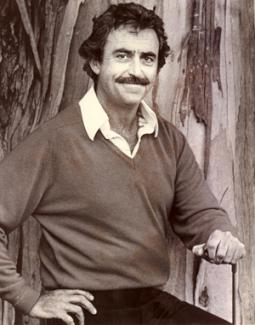Featured Golf News
Introducing 'Boldt from the Blue'
Bob Boldt contacted me in late-summer 2014 about publishing his book. Bob, a former regular on both the PGA and Champions tours, is currently the director of golf at Vintners Golf Club in Yountville, Calif., where he continues to teach the finer points of the golf swing and stays remarkably active.

Bob Boldt at the NorCal Open
The following is a Foreword and the lead-in to a series of excerpts from Bob's forthcoming book. It's written by his longtime protégé, Mark Blakemore, a fellow teaching pro in California.
The excerpts will run in our new Cybergolf section, "Boldt from the Blue," which will chronicle Bob's rich experiences on tour and in amateur events, and are written in his own words. A scientist of the golf swing, Bob has culled just about every positive element from some of golf's greatest players. As you will see in the upcoming installments, his keen sense of observation is remarkable.
Here's what Mark has to say about his experiences - and friendship - with the inimitable Bob Boldt.
I met Bob Boldt in 1985 at the Northern California Long Drive Championship, a competition I was in at his facility, Boundary Oak Golf Course in Walnut Creek. At that time I had been playing golf for 15 years or so, and had even taught the game at Cal State University, Fullerton, but was working in a friend's family business outside of golf.
Bob apparently liked my swing from what he saw in the Long Drive competition and offered to help me further develop my technique. I went on to fair success in long-driving and was also a charter member of the YONEX Long Drive Exhibition Team. Over the years I have seen Bob similarly help many developing players.
One of the first things he said when we met was to work on my technique. Namely, I needed to change my grip, from interlocking to full-finger (no interlock or overlap). Growing up with Jack Nicklaus as my ultimate hero, I was relatively attached to the interlocking grip, even though in retrospect it was not right for me. Bob also said to dump my persimmon-headed, graphite-shafted, 44-inch driver in favor of a 46-inch metal model (at the time I thought, 46 inches, whoa!).
Bob seemed pretty confident in his advice, plus I knew he was a good player and a long-hitter, so I just decided to try all that he recommended, and have not regretted it for a minute since.
It took me about an hour of total practice time over the course of a couple days to adapt to the full-finger grip, and in those two days I was also quite easily able to adapt to the 46-inch club (I would later move all the way up to a 48-inch club for competing in long-driving). To this day I still use the full-finger grip with all shots, including pitches from near the green.
One thing lead to another and I ended up working for Bob at Boundary Oak, doing my PGA apprenticeship there, becoming a PGA member, and teaching the game from 1987 to the present. I also began editing Bob's "Thunderboldt's" newsletter, which was about his experiences as a tour professional, his observations about current events in golf, and local golf news.
When I started working with Bob I was impressed not only with his golf swing but also what he had accomplished at Boundary Oak. He started operating the golf course in 1976 and rebuilt it into the No. 1 public golf course in San Francisco's East Bay. He also hosted several professional tournaments, including the Stead Open, sponsored by his longtime friend, Mike Stead. Fuzzy Zoeller, Charlie Wi, Bob's son Rob and a host of professionals have won tournaments at Boundary Oak. It was a Northern California hot spot for amateurs and professionals.
For a guy most golf fans have never heard of, Bob is a very skilled player with the credentials to confirm it. He held the 18-hole scoring record for a par-72 course on the PGA Senior Tour, a 62. He won the statistical category of driving distance on the Senior Tour in 1988 and was always near the top in sand saves.
Driving distance speaks for itself. But what some people might not consider about the sand save category is that not only do you have to be an excellent bunker player, you also have to be a good putter. (Sand saves are tracked as a percentage: how many times you get the ball down in two from a greenside bunker compared to the number of attempts.) So I think it is very unusual - and very telling - for any player to excel in both driving distance and a short-game category. Combining those elements with the fact that he qualified through the ranks for both the PGA Tour and the Senior PGA Tour says a lot about his abilities.
Meeting Bob and getting his help with my golf game and technique for long-driving was an important turning point for me, and I appreciate it still. He has had the opportunity to play with some of the game's icons, and it has been fun listening to him talk about them over the years.
I think his recollections offer a great perspective on an extended period in golf history and some of the people who pushed professional golf as a recognized sport, while giving a sense of how anecdotal and experimental it all was before the arrival of today's science-oriented and data-driven, more-antiseptic game.
It is a great pleasure to be able to help Bob put together some of his experiences, memories, lessons learned and observations from over five decades. I hope you enjoy them as much as I do.
Written by Mark Blakemore
Story Options
 |
Print this Story |
